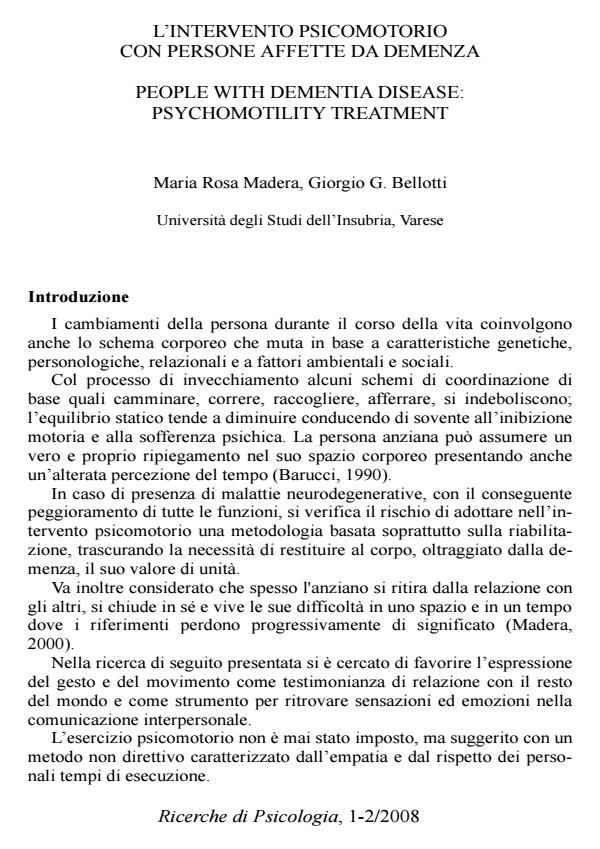L'intervento psicomotorio con persone affette da demenza
Titolo Rivista RICERCHE DI PSICOLOGIA
Autori/Curatori Maria Rosa Madera, Giorgio G. Bellotti
Anno di pubblicazione 2008 Fascicolo 2008/1-2
Lingua Italiano Numero pagine 10 P. 297-306 Dimensione file 529 KB
DOI
Il DOI è il codice a barre della proprietà intellettuale: per saperne di più
clicca qui
Qui sotto puoi vedere in anteprima la prima pagina di questo articolo.
Se questo articolo ti interessa, lo puoi acquistare (e scaricare in formato pdf) seguendo le facili indicazioni per acquistare il download credit. Acquista Download Credits per scaricare questo Articolo in formato PDF

FrancoAngeli è membro della Publishers International Linking Association, Inc (PILA)associazione indipendente e non profit per facilitare (attraverso i servizi tecnologici implementati da CrossRef.org) l’accesso degli studiosi ai contenuti digitali nelle pubblicazioni professionali e scientifiche
L'intervento psicomotorio con persone affette da demenza We report the outcome of a sample survey on elderly people suffering from dementia in which we focus on the benefits achieved both on behaviour and mood level. The psychomotor intervention is constructed on a therapeutical treatment that improves the self advocacy on action and communication. This cure develops on the privileged level of expressiveness and sentiment that in the relationship come out through gesture and movement. The meeting metaphor takes its place in a present time, therefore well known, and draws a space where both psychomotor therapist and patient, try out together the “corporeity” as an internal element lived and felt. The psychomotor recovery of the value of poses, postures, balances and theirs changes in the relationship led to a better understanding of the behaviour of the patient whose symptom, usually suppressed by pharmacological therapy, is the only way to communicate with the world.
Maria Rosa Madera, Giorgio G. Bellotti, L'intervento psicomotorio con persone affette da demenza in "RICERCHE DI PSICOLOGIA " 1-2/2008, pp 297-306, DOI: